Do you ever wonder about the quality of air in your home? Many people do, which is why they purchase an air quality monitor. These air quality sensors can detect pollutants and alert you to dangerous or low quality air in your home.
If you’re curious about your home’s quality of air, invest in one of the best air quality monitors on the market today. There are plenty of options that can detect fine dust particles, chemical toxins, and much more.
Best Air Quality Sensors
Check out the best air quality monitors to learn whether the air in your home is clean or full of toxins and pollutants. Improve your home health with these air monitors!
These are the Best Air Quality Monitors:
- uHoo Indoor Air Quality Sensor – 9 in 1 Smart Air Monitor
- Kaiterra Laser Egg + Chemical: Indoor Air Quality Monitor
- Airthings Wave Plus Indoor Air Quality Monitor
- Temtop M10 Air Quality Monitor
- Awair 2nd Edition Air Quality Monitor
- Atmotube PLUS: Portable Outdoor and Indoor Air Quality Monitor
- Huma-i (HI-150), Advanced Portable Air Quality Monitor
- EG Air Air Quality Monitor
- AiRead N1 Industrial Grade Real-Time Air Quality Monitor
- YVELINES Indoor Air Quality Monitor
Air Quality Monitor Reviews
uHoo Indoor Air Quality Sensor – 9 in 1 Smart Air Monitor
Features:
- 9 sensors: temperature, humidity, dust, toxins, nitrogen dioxide, carbon dioxide, ozone, air pressure, VOCs, and more
- Mobile app streamlines data
- Smart integrations: compatible with IFTTT, Alexa, Google Home, Nest, and more
- Compact design
- Alarms and adjustable threshold alerts
- Tips on how to improve air quality
- 1 year warranty
Pros:
- Detects most home toxins
- Smart capabilities
Cons:
- Only works on 2.4GHz WiFi
- Some reports of difficult set up
Verdict
The uHoo Indoor Air Quality Sensor is a great pick for most homes. Its ability to connect to smart devices like Alexa, Nest, Google Assistant, or IFTTT is an exciting perk, especially for those who use other smart home devices. There were some complaints of a difficult set up, but that may be because customers did not realize that it has to connect to 2.4 GHz WiFi, not 5.0.
[amazon box=”B076PV9X99″]
Kaiterra Laser Egg + Chemical: Indoor Air Quality Monitor
Features:
- Measures fine dust particles (PM2.5), total VOC chemicals, temperature, and humidity
- Kaiterra app shows historical data and sends alerts when air levels are dangerous
- Cloud-based calibration
- Integrates with other smart devices via Apple Home Kit or IFTTT
- 8 hour battery life
- Multi-lingual
- Meets international AQI standards
- Has sleep settings
Pros:
- Measures most important air quality toxins
- App and device are easy to use
- Smart integration
Cons:
- Some users say TVOC is overly sensitive
- Some complaints of poor WiFi connection
Verdict
The Kaiterra Laser Egg + Chemical Indoor Air Quality Monitor is one of the best air quality sensors on the market. It reads all the most important measurements for air quality and is fairly accurate, although some users think that the TVOC sensors are too sensitive. It can work with smart home setups, and it’s easy to use and understand.
[amazon box=”B077JWYJTV”]
Airthings Wave Plus Indoor Air Quality Monitor
Features:
- 6 key indoor air factors: Radon, carbon dioxide, toxins and chemicals (total VOCs), humidity, temperature, and air pressure
- Airthings mobile app streamlines data and reporting
- Color-coded sensor shows general air quality
- Smart integration with IFTTT, Alexa, Google Assistant
- Battery operated, 16 month battery life
Pros:
- Detects radon
- Smart integration
- No need to plug in
Cons:
- Poor WiFi connection
- Frequent software updates take a while
Verdict
The Airthings Wave Plus Indoor Air Quality Monitor is another good option. It detects the main 6 toxins or air factors that are most important to your health, and if you wave your hand over the sensor it will light up green, yellow, or red to alert you to the general air quality in your home. The app is easy to use, and it can work with smart devices. Customers have complained about connectivity issues, however, as well as slow and frequent software updates.
[amazon box=”B07JB8QWH6″]
Temtop M10i WiFi Air Quality Monitor
Features:
- 4 main air factors: PM2.5, HCHO, TVOC toxins, and AQI, which includes ozone, carbon dioxide, nitrogen dioxide, sulfur dioxide and more
- Temtop App features real time data and weather
- Updated and advanced particle sensor
- Lasts 6 hours on one charge
Pros:
- Easy set up
- Accurate and extensive readings
Cons:
- App only works well with one phone at a time
- Short battery life – works better plugged in
Verdict
The Temtop M10i is another good choice for anyone worried about their air quality. While it doesn’t connect to smart devices, it still works well for those who don’t need that feature. It’s easy to set up and the app offers plenty of data, including the weather forecast. It is also small and easy to hide around your home if you don’t want to leave it out.
[amazon box=”B07JF53NRK”]
Awair 2nd Edition Air Quality Monitor
Features:
- Measures 5 key factors of air quality: fine dust (PM2.5), chemicals (VOCs), carbon dioxide, humidity, and temperature
- Awair app provides real-time feedback
- Offers actionable tips to improve air quality
- Smart integration with Alexa, Google Assistant, and other smart devices
- Can manage multiple Awair devices from one smartphone app
- Color coded air quality reporting and 0-100 scoring scale
Pros:
- Covers up to 1000 feet of space with accuracy
- Sleek, compact design
- Smart integrations
Cons:
- Only works with 2.4GHz WiFi
- Complaints of different reports between different models
Verdict
The Awair 2nd Edition Air Quality Monitor is a great purchase for anyone looking for a stylish air quality sensor for their home. It can integrate with other smart devices if you have a smart home, and it reports on the most important factors of air quality. The tips are helpful to take action if your air is not ideal. The only issue is that some people found conflicting readings compared to other models of the device.
[amazon box=”B07F282LF4″]
Atmotube PLUS: Portable Outdoor and Indoor Air Quality Monitor
Features:
- Measures a wide range of VOCs plus atmospheric pressure, temperature, and humidity
- Works indoors and outdoors
- Pocket sized
- Up to 7 days battery life
- Atmotube mobile app shows historical and real-time data, sends threshold alerts, and gives a personal air quality score
- Environmental data is shared to a global air quality map for public use and research
- Portable and wearable
Pros:
- Accurate – reads every 2 seconds
- Extremely small and portable
- Works indoors and outdoors
- Easy to use app
Cons:
- Must connect to app – no screen on the device
- Doesn’t measure CO2 or fine dust particles
Verdict
The Atmotube PLUS is a great buy, especially for those interested in their outdoor air quality as well. It’s extremely easy to carry around to measure the quality of air throughout your day. As long as you have a smartphone to connect it to, this air quality sensor works great and provides useful information about your environment.
[amazon box=”B07NPP39J5″]
Huma-i (HI-150), Advanced Portable Air Quality Monitor
Features:
- Measures carbon dioxide, VOC chemicals, dust particles (PM2.5 and PM10), temperature, and humidity
- Works indoors and outdoors
- Built-in fan to draw in ambient air for real-time readings
- Easy to read display
- Small, compact design
Pros:
- Measures all the important factors accurately
- Indoor and outdoor use is a plus
- Portable
Cons:
- No accompanying app
- No smart integrations
Verdict
The Huma-i HI 150 Air Quality Monitor is a great option for anyone on the go. It is portable and can also accurately read outdoor air quality, which many others cannot do. This is great for those in areas like cities with poor air quality that may wonder if opening a window will help or harm their home’s air quality. Unfortunately, it does not have an app for reporting or smart integrations, but it’s a great basic air quality meter.
[amazon box=”B07RKYLMTD”]
EG Air Air Quality Monitor
Features:
- Measures HCHO (formaldehyde), TVOCs, fine dust particles (PM2.5 and PM10)
- Built-in fan draws in ambient air for real time testing
- Adjustable alarm for poor air quality
- Portable
- Comes with 20+ page eBook on Gas and Air Quality Hazards
- US based support line
Pros:
- Accurate readings
- Detects formaldehyde levels
- Portable
Cons:
- Does not detect carbon dioxide, humidity, or temperature
Verdict
This is a solid choice if you’re looking for a simple air quality monitor. This device from EG Air is accurate and useful in many ways, although it does not detect carbon dioxide, humidity, or temperature. It is small and portable, however, and works well for many customers. The eBook helps to explain air quality, how readings work, and the dangers of poor air quality. While it isn’t our top pick, it is a good, affordable option.
[amazon box=”B074FTVHFN”]
AiRead N1 Industrial Grade Real-Time Air Quality Monitor
Features:
- Measures fine dust particles (PM2.5), formaldehyde (HCHO), temperature, and humidity
- AiRead app shows real-time reporting and historical data, as well as weather reports
- Built-in fan to draw in air
- Magnetic shield around laser sensor to block electricity that could affect readings
- Smart device compatible
Pros:
- Accurate readings
- Compact design
Cons:
- Does not measure carbon dioxide or VOCs
- Readings are very technical, not reported in layman’s terms
- One reviewer said the app is in Chinese – no confirmation either way
Verdict
The best part of the AiRead N1 Industrial Grade Real-Time Air Quality Monitor is that it’s accurate – unlike most other sensors, there are no complaints about inaccurate reporting. There are other drawbacks, however: it does not detect as much as other air quality meters, the reports are in very technical terms that most people won’t understand without researching, and the app may be in Chinese (we can’t find it to confirm).
YVELINES Indoor Air Quality Monitor
Features:
- Measures fine dust particles (PM2.5 and PM10), carbon dioxide, formaldehyde (HCHO), TVOCs, temperature, and humidity
- Measures in Celsius and Fahrenheit
- Easy to read, air quality light indication and alarms in case of dangerous air quality
- Rechargeable battery lasts 6 hours
- Works best while stationary – expect odd fluctuations for a few minutes if you move it
Pros:
- Very accurate readings on all the key air quality factors
- Easy to use and set up
Cons:
- No app
- No smart integrations
Verdict
The YVELINES Indoor Air Quality Monitor is a solid purchase, known for super accurate results. While it doesn’t have as many modern features like a mobile app or smart home capabilities like some others, there are no complaints about its accuracy – which is the most important feature. For a basic meter to test your air quality, this is a good purchase at an affordable price.
[amazon box=”B07VP34RNF”]
How To Measure Air Quality
One of the best ways for common people to measure their air quality is through an air quality meter – we’ve listed some of the best air quality monitors on the market today, so it should be easy to find one that works for you.
Generally, however, air quality measurements are streamlined by an Air Quality Index, or AQI. The AQI is measured on a scale of 0 to 500 degrees, and is generally for outdoor measurements. This chart from AirNow shows AQI measurements and their associated health levels:
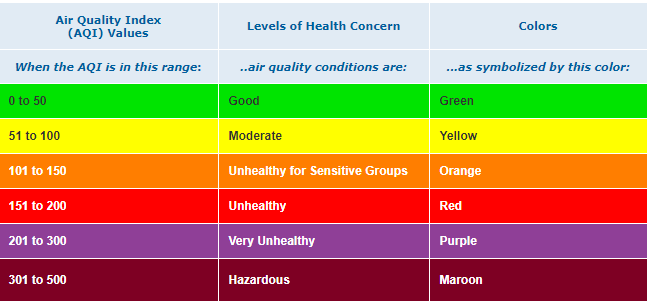
Aside from the general AQI measurement, there are other measurements for indoor air quality testing. Look out for the following measurements to determine your home’s air quality:
Fine Dust and Particles
These are often listed as PM 2.5 or PM 10 – microscopic particles in the air. PM 2.5 is any particle smaller than 2.5 microns, likely smoke from fire, candles, cigarettes, cooking, vehicle exhaust, and so on. PM 10 is any particle smaller than 10 microns, which typically includes dust, pollen, or mold.
Volatile Organic Compounds (VOCs)
VOCs are gases of a range of chemicals that can be emitted from various products in many homes. These organic compounds can cause minor irritation to more harmful health issues. Most air quality sensors will detect certain harmful VOCs, which often come from household items like paint, cleaners, aerosol sprays, and even on furniture.
Carbon Dioxide
Carbon dioxide is a very natural substance, as we all exhale this gas. Too much carbon dioxide can be a problem, however, and suggests poor ventilation which could lead to the build up of other chemicals. High levels of CO2 are often associated with high levels of other polluting agents, which is why many air quality monitors detect CO2.
Formaldehyde
Formaldehyde, also known by its chemical composition H-CHO, is a common chemical found in paint, building materials, and other household objects. High levels of formaldehyde can be dangerous for one’s health, which is why it is often detected by air quality meters. Too much formaldehyde can cause eye, nose, throat, or skin irritation. It is also a carcinogen, so extreme levels can potentially cause cancer.
Temperature and Humidity
Many air quality monitors also measure temperature and humidity. While temperature is relatively easy to keep track of via your thermostat, humidity is another important factor. These two, in combination, can affect the relative humidity of your home.
Relative humidity indoors should be between 30% and 50%, ideally. A relative humidity higher than 60% can lead to mold and mildew growth in your home, which is a pollutant. Low humidity below 20% can dry and irritate the eyes, throat, and other mucous membranes.
Air Quality Meter Buying Guide
Now that you understand the common pollutants and air quality factors in your home, how do you choose the best monitor? Use our buying guide to find the best air quality sensor for you.
Measurements and Precision
What factors does your chosen air quality monitor read? Not all of them detect every pollutant, so be sure to check what they can and cannot detect and get the right device for your needs.
After that, check out reviews to see how precise the measurements are. You can look into the system of measurement, although it might get too scientific for most people to follow. Reviews should provide a good idea of how paying customers felt the device worked.
Size
The size and look of an air quality meter can affect your decision to purchase. No one wants a huge, bulky, ugly monitor on display in their home. Many of the top air quality monitors are compact and stylishly designed to fit into any home decor.
Ease of Use
How easy is it to use and understand your monitor? Most have screens with the real-time output, and the more advanced options come with an accompanying app for your smart phone where you can access data. Make sure that you can easily use and understand your air quality sensor of choice. Consider the ease of set up as well.
Smart Integrations
Many of today’s products are smart air quality monitors. They can connect with smart home hubs, integrate with other smart devices, and more. If you have a smart home and want all of your devices connected, pick one of the smart air monitors.
Final Thoughts
Choose from one of our favorite air quality monitors to monitor and improve the quality of air in your home! The best air quality monitors can detect all of the most common toxins and streamline data so that you can easily understand.



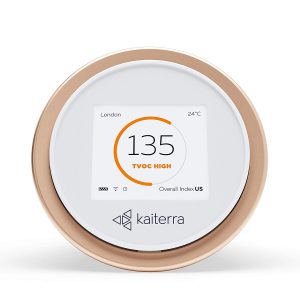
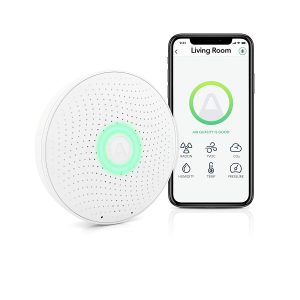
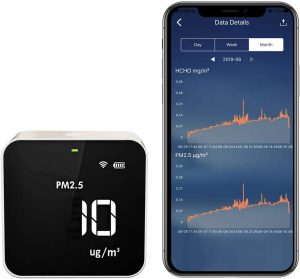
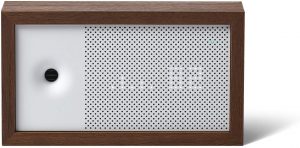
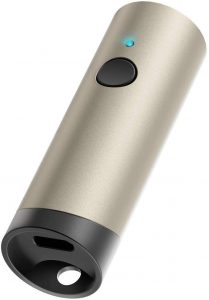
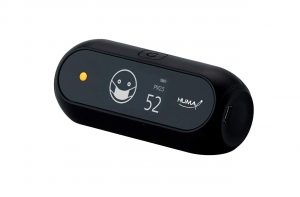

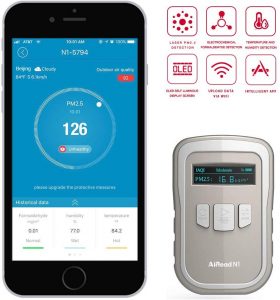






Add comment